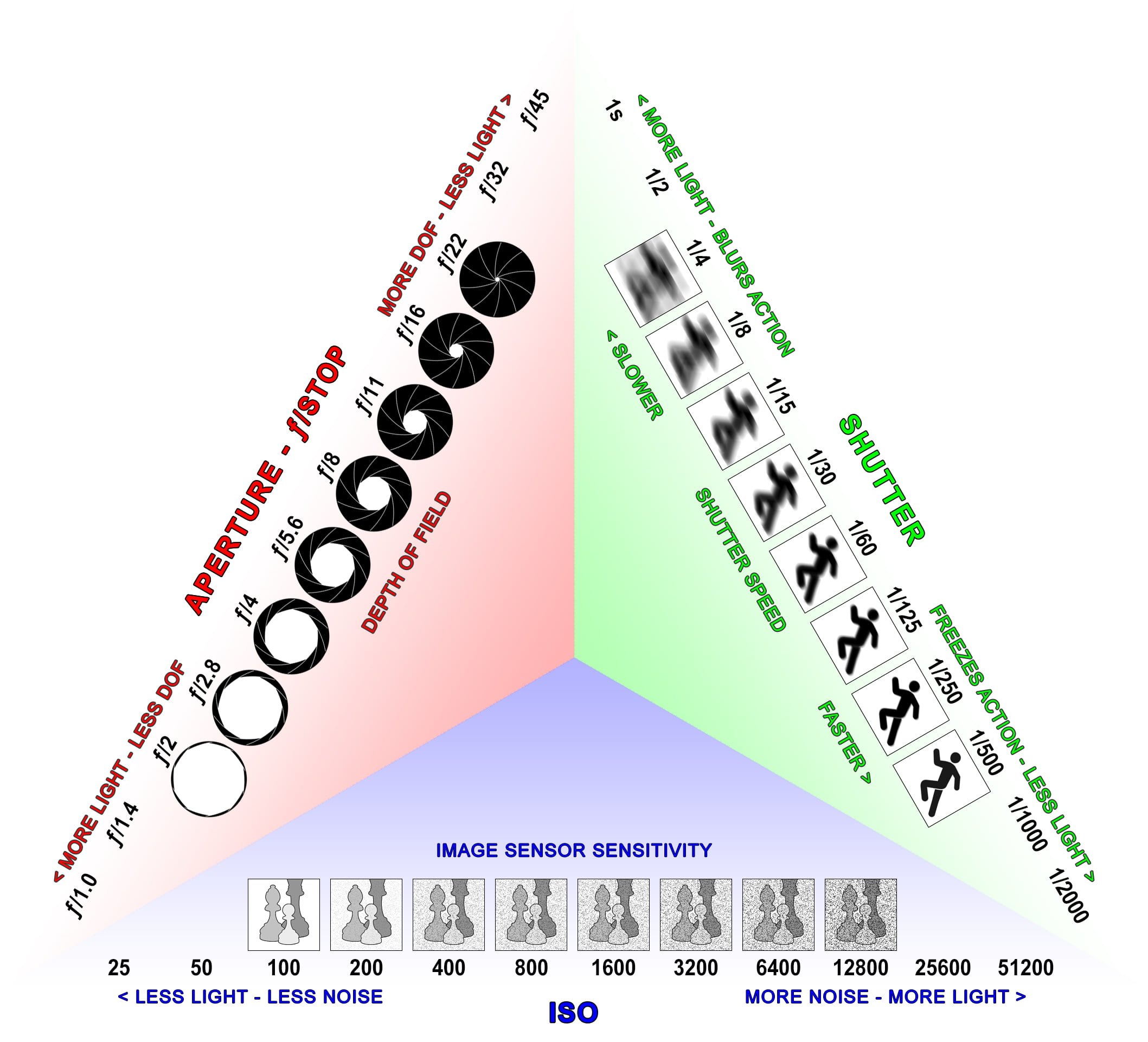Introduction
Exposure is a measurement of the amount of light hitting camera’s sensor. It determines how light or dark your picture looks. It can be controlled by
- Shutter speed : It indicates the speed in which the curtain opens then closes. This is essentially how long light is permitted to hit your camera’s sensor once you hit the shutter-release button. Each shutter speed value also represents a “stop” of light. The shutter speed is measured in fractions of a second.
- Aperture : It controls the lens’ diaphragm, which controls the amount of light traveling through the lens to the film plane. The aperture setting is indicated by the f-number, whereas each f-number represents a “stop” of light.
- ISO : It stands for International Standards Organization. It standardizes sensitivity ratings for camera sensors. It controls the sensitivity of your camera’s sensor to a given amount of light.
Camera’s Auto mode will do that most of the time for these parameters. Sometime to get the proper exposure, we need to adjust these settings so that photo looks good.
Camera lens bends the light rays into the camera sensor, light passes through aperture and shutter before falling on the camera sensor. Below figure shows the path of the light from subject till camera sensor.
Exposure Triangle
Each setting controls exposure differently:
- Aperture: controls the area over which light can enter your camera
- Shutter speed: controls the duration of the exposure
- ISO speed: controls the sensitivity of your camera’s sensor to a given amount of light
One can therefore use many combinations of the above three settings to achieve the same exposure. The key, however, is knowing which trade-offs to make, since each setting also influences other image properties. For example, aperture affects depth of field, shutter speed affects motion blur and ISO speed affects image noise. Changing the value of one requires adjustment of the other two settings. Otherwise, the exposure will be overexposed (too light) or underexposed (too dark).
For the above figure, if you increase the f-stop, you decrease the size of the lens’ diaphragm thus reducing the amount of light hitting the image sensor, but also increasing the DOF (depth of field) in the final image.
Shutter speed affects how motion is captured, in that this can cause the background or subject to become blurry. Reducing shutter speed (shutter open longer) increases the amount of light hitting the image sensor, so everything is brighter.
Increasing the ISO, allows for shooting in lower light situations, but you increase the amount of digital noise inherent in the photo.


